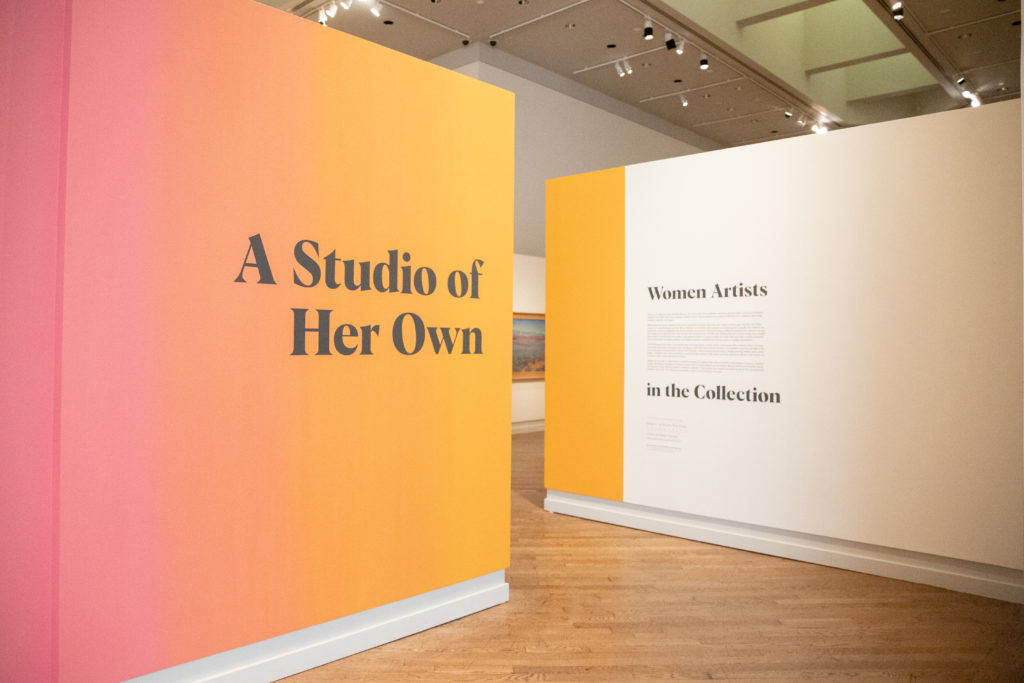
Home builders. Survivors. Trend-setters. Fighters. Standing in the gallery of BYU’s Museum of Art, students can almost hear them whispering from the walls.
They are 58 remarkable female artists, and their messages of inspiration and hope are featured in the MOA’s “A Studio of Her Own” exhibit, which closes this week.
“We had no idea that 2020 would be such an unexpected and unprecedented year with the pandemic, and with earthquakes and fires and racial unrest,” exhibition curator Janalee Emmer said. But in the paintings, she said, “there’s a lot of relevance for today’s moment.”
“A Studio of Her Own” celebrates 110 works by female artists of diverse backgrounds and faiths. Some of their pieces celebrate racial diversity, like the vibrant quilt “Subway Graffiti #3” by prominent Black artist Faith Ringgold, who grew up in Harlem. The piece features superstars like Diana Ross and Michael Jackson as well as the faces of Ringgold’s own friends and family members.

Emmer said the unique piece “Blanket Stories,” which features a tower of colorful handwoven blankets, speaks to the universal struggle for identity through the experiences of its creator, Marie Watt, the daughter of a native Seneca mother and a rancher father.
While some of the artwork featured in the exhibition focuses on social tension and change, Emmer said there are also pieces meant to bring comfort and hope.
A section on religious art features the piece “Apocalyptic Angel” whose creator, Ultra Violet (Isabelle Collin Dufresne), was prompted to join The Church of Jesus Christ of Latter-day Saints after a near-death experience in 1973. According to a 2005 interview with Violet, included in a virtual tour of the exhibit on the BYU MOA app, the painting represents the artist’s belief that Christ will come to the earth again, and that angels are all around us.
BYU student Kate Hancey, one of the museum’s recent visitors, said she personally finds comfort in the seemingly mundane scenes featured in the exhibit: women having a family dinner, taking care of children or pausing in quiet reflection. “(These artists) show me how I can be inspiring or powerful, even just as a day-to-day woman,” she said. “I don’t need to be superhuman. I just need to be myself.”
Emmer said that because everyone brings different life experiences to the gallery, everyone who views the artwork will have unique takeaways. “That’s partly why we turn to art, to find meaning in our lives, and that becomes more poignant through difficult times,” she said.
The exhibit closes Saturday, Sept. 12.




